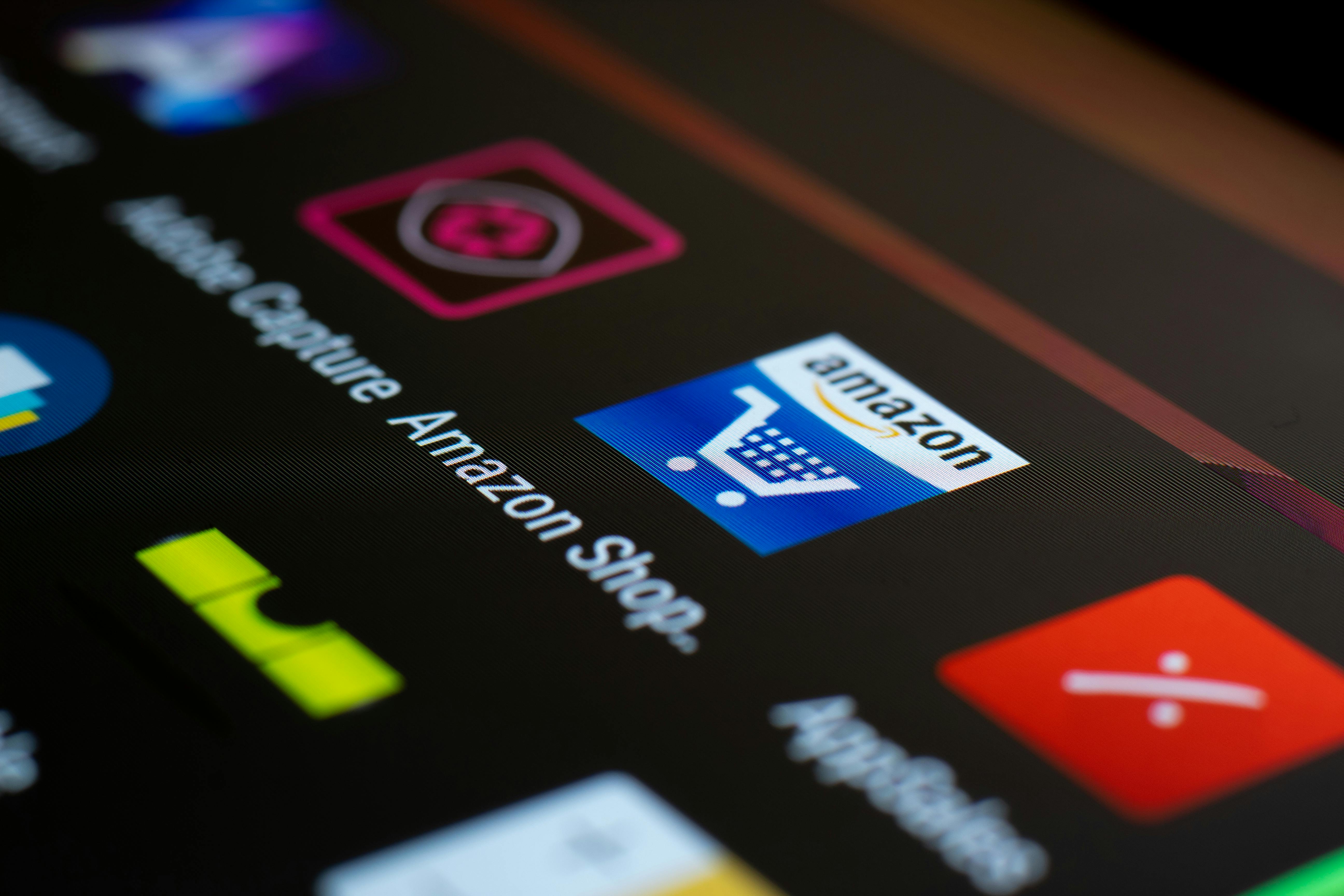How to Find the Best Internet Provider in Your Area: A Step-by-Step Guide
Discover how to find the best internet provider in your area with our detailed guide. Explore plans, speeds, promotions, and more to connect confidently.

Navigating the World of Internet Providers
In every corner of our lives, the internet is a constant presence.
Finding an ISP that matches your needs can feel like navigating a labyrinth of choices, each with its own set of promises.
As the world leans into digital realms, the stakes for selecting 'just right'—especially for spaces where options may seem as sparse as stars in the city night sky—intensify.
Choose wisely, connect seamlessly.
Assessing Your Internet Demands
Identify key online activities, and estimate their frequency and bandwidth needs to match ISP offers with your lifestyle.
Consider your household's collective online habits—from streaming high-definition movies to video conferencing for remote work—to gauge necessary bandwidth and data thresholds.
Remember, aligning download and upload speeds with your internet consumption habits ensures a tailored, satisfactory online experience.
Calculating Speed for Daily Activities
In the age of high-definition streaming and multiplayer online games, adequate internet speed is non-negotiable. Activities such as video conferencing or streaming in 4K require robust bandwidth to prevent lagging and buffering. It's crucial to align your connection speed with these demanding online pursuits to ensure seamless interaction and entertainment.
When it comes to everyday online tasks like checking emails, browsing social media, or reading news sites, speeds of around 5 Mbps are usually sufficient. However, for data-intensive activities—think cloud computing, streaming high-definition videos, or engaging in competitive online gaming—a minimum of 25 Mbps is often recommended to maintain a smooth experience.
High-speed internet does more than just stream videos; it enhances your overall digital experience.
Remember that several devices connected simultaneously will divide the available bandwidth. To cater to multiple users streaming, gaming, telecommuting, or downloading large files, you might need speeds exceeding 100 Mbps. This ensures that everyone’s online activity is uninterrupted and that your household’s digital ecosystem functions optimally.
Understanding Data Limitations
Bandwidth is essential, but overlooking data caps can lead to unexpected service throttling or additional charges.
- Evaluate Data Needs: Assess monthly online activities to estimate your required data allowance.
- Understand ISP Policies: Each provider has unique data cap limits and overage fees—know them.
- Monitor Usage: Regularly check your data consumption to avoid surpassing your limit.
- Plan for Extras: Consider data requirements for occasional large downloads or updates.
- Seek Unlimited Plans: If available, an unlimited data plan prevents any overage concerns.
Data caps can severely impact your online experience if they're too restrictive for your needs.
An informed choice about data limitations ensures your internet package aligns with your lifestyle. For more information, you might want to learn about us.
Types of Internet Connections Compared
Satellite internet beams data directly to your home from orbiting satellites, offering coverage in expansive, rural areas where other connections don't reach.
Although DSL (Digital Subscriber Line) is widely accessible, leveraging existing telephone lines, it typically offers slower speeds compared to cable or fiber-optic options.
In comparison, both cable and fiber-optic networks promise faster download/upload speeds, but their availability may be limited in remote locations.
Pros and Cons of Satellite Service
Satellite internet is recognized for its expansive coverage, reaching areas where terrestrial broadband options cannot. It's a lifeline for rural residents, filling connectivity gaps left by other technologies.
However, satellite service often comes with higher latency due to the signal's long journey from space to Earth. This delay can affect real-time online activities, such as gaming or video conferencing, where quick responses are crucial.
Moreover, while the technology is improving, satellite internet speeds generally lag behind those of cable or fiber-optic services. Weather can also disrupt the signal, leading to intermittent connectivity issues during storms or heavy cloud cover.
On the upside, recent advancements in satellite technology are promising. New constellations of low Earth orbit (LEO) satellites aim to reduce latency and increase bandwidth, potentially revolutionizing rural internet access.
Yet, consumers should be aware of the higher initial setup costs associated with satellite internet. Installation requires a dish and specialized equipment, which can be pricey compared to other services.
Fiber vs. DSL vs. 5G Overview
Fiber-optic internet outshines its rivals in speed and reliability.
When it comes to high-speed internet, fiber-optic technology often takes the lead. With its capacity for delivering gigabit speeds directly to homes and businesses, it's an option that beckons future-proof connectivity. Notably, fiber is renowned for its low latency and consistent performance, which is ideal for bandwidth-intensive applications like streaming ultra-high-definition video or engaging in competitive online gaming. Moreover, it tends to offer symmetrical upload and download speeds, which can significantly enhance user experience.
DSL internet relies on pre-existing telephone lines.
On the other hand, Digital Subscriber Line (DSL) internet relies on traditional copper phone lines, thus limiting its maximum speed compared to fiber. While its widespread availability makes it accessible, especially in areas without fiber, its performance can wane with increased distance from the provider's central office. Additionally, DSL speeds are typically much lower than those of fiber and may struggle with high-bandwidth tasks.
5G brings wireless innovation to internet delivery.
Joining the fray is 5G technology – the next evolution in cellular networking that promises significantly faster speeds and lower latency compared to its predecessors. Its implementation as a home internet solution is nascent but holds substantial potential for both urban and rural communities looking to leap over traditional wired connectivity issues.
The competition among fiber, DSL, and 5G is intense.
Each of these three internet service types comes with unique advantages and limitations, making the choice between them a balancing act. Fiber's leading-edge speed and stability are countered by its limited availability, especially in unserved and underserved areas. DSL stands as a widely available but slower alternative, while 5G is poised to redefine wireless internet with its competitive speeds and improving coverage as infrastructural rollouts continue into 2023 and beyond. The landscape of internet connectivity is constantly evolving, presenting consumers with an ever-expanding arsenal of options to choose from based on their specific requirements and geographic reality.
Finding Local Internet Providers
To localize your ISP search, start by assessing specific providers operating within your vicinity. Tools like FCC's ISP database enhance this targeted approach, refining options based on geography.
In rural communities, local offices or community centers often bridge the gap, providing updates on internet providers that cater to less populated regions. These hubs can offer guidance on the most reliable and cost-effective services near you.
Tapping into "word-of-mouth" reviews can often yield genuine insights into the performance and customer satisfaction levels of nearby ISPs. These local testimonials can be invaluable in your decision-making process.
Leveraging ZIP Code Search Tools
Harness the power of precision with ZIP search.
Online resources are invaluable for pinpointing local internet options. By entering your ZIP code into dedicated search tools on websites such as BroadbandNow or the FCC's National Broadband Map, you can obtain a tailored list of internet service providers that are active in your area. Furthermore, these tools can also deliver vital details about coverage areas, speeds, and customer ratings, which can heavily influence your selection process.
Data at your fingertips can simplify complex choices.
Such tools often update, offering the latest insight. It's essential to verify this information with the providers directly, as service availability and plans may change. Use these search tools as a starting point to compile a list of candidates but follow up with individual ISPs to confirm the specifics.
Opt for a multi-pronged research approach.
Remember, these tools should complement other research strategies. While they're highly effective at presenting a snapshot of available services, further investigation and comparison are crucial. Ensure you're taking a holistic approach by also considering local knowledge, online reviews, and word-of-mouth recommendations in parallel with your findings.
Reading Reviews for Insight
Customer feedback is a valuable resource for understanding service satisfaction. By leveraging online reviews, you can discern patterns in performance, reliability, and customer care from existing users' experiences.
Peer assessments offer real-world evidence of service quality.
Reviews provide key insights into the reliability of speeds claimed by ISPs and reveal hidden issues with stability or coverage that may not be immediately apparent.
Understanding the context in those reviews is critical, as not all issues may be relevant to your situation. Be mindful of the dates of reviews, as companies frequently improve their services over time.
It's also important to distinguish between genuine concerns and one-off complaints, to get a balanced view. Consider patterns in reviews – a recurring mention of slow speeds during peak hours might indicate a more systemic issue.
Make sure to peruse both positive and negative testimonials. While positive reviews reflect what an ISP does well, the negative ones often highlight areas that may directly impact your user experience.
Ultimately, reviews are a tool to gauge others' satisfaction with an ISP's service. Meticulous examination allows you to anticipate any challenges you might face and make an informed decision.
Deciphering Internet Plans
Sifting through internet plans can be akin to navigating a labyrinth filled with technical jargon and confusing terms. When you encounter phrases like "bandwidth throttling," "network management practices," or "introductory pricing," it's crucial to understand what they signify for your daily use. Remember, appealing rates often come with strings attached – such as a steep increase after a promotional period or penalties for exiting a contract early. Equip yourself with knowledge about the specifics of each plan, and match them with your internet needs to find the perfect balance between cost and functionality.
Evaluating Costs and Contracts
Before committing to an internet plan, scrutinize the associated expenses and contractual obligations. Initial costs, monthly charges, potential fees for exceeding data limits, and equipment rentals or purchases should all factor into your decision.
Don't overlook the fine print of any contract. Hidden fees can unexpectedly inflate your monthly expenditures.
Often, service agreements bind you to a fixed term, generally coupled with an attractive promotional rate. It's essential to understand the full duration of the contract and the cost implications once promotional periods lapse.
Be alert to clauses related to early termination fees. If your circumstances change, knowing these penalties will prepare you for any financial repercussions of ending the service prematurely.
Consider potential long-term savings over upfront discounts. Sometimes, a modestly priced plan without an enticing introductory offer may provide greater financial benefits if it aligns closely with your usage needs and avoids costly extras.
Lastly, evaluate the customer service aspect of contracts. Responsive support and a clear dispute resolution process are invaluable when issues with your internet service arise.
Analyzing Speeds and Data Policies
When scouting for an internet provider, speed is often the headline feature. It's essential to measure these promises against your regular activities to determine if they meet your demands.
Indeed, while fast download speeds are alluring, you must balance this against potential data caps. A high-speed plan is less attractive if it imposes strict limits, potentially throttling your internet or incurring fees once you exceed a predefined data quota. Understanding these constraints is crucial to ensure uninterrupted service and predictable billing.
Moreover, upload speeds are frequently overshadowed by their flashier counterpart, download speeds. Yet, they are vital for specific tasks, such as video conferencing and online gaming. A plan with balanced download and upload speeds will provide a more seamless internet experience, particularly if your household's activities are diverse.
Finally, scrutinizing the provider's data policy is as important as analyzing speeds. Data caps, if not managed, can constrain your online behavior, penalizing heavy usage or extensive streaming. When evaluating plans, weigh the flexibility of the data policy against the speed offerings, ensuring your chosen package offers the best combination to suit your lifestyle and prevent unwelcome surprises on your bills.




